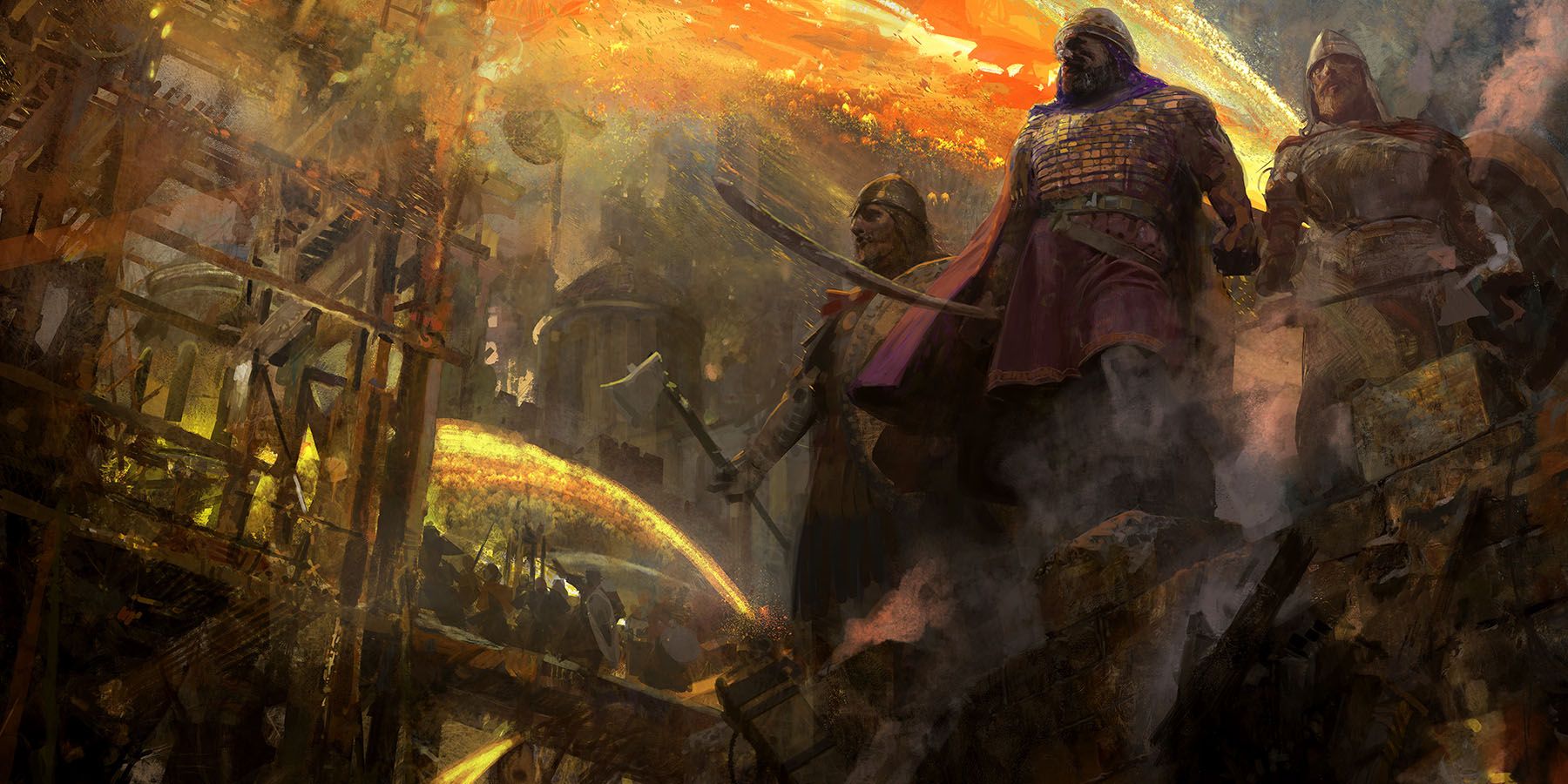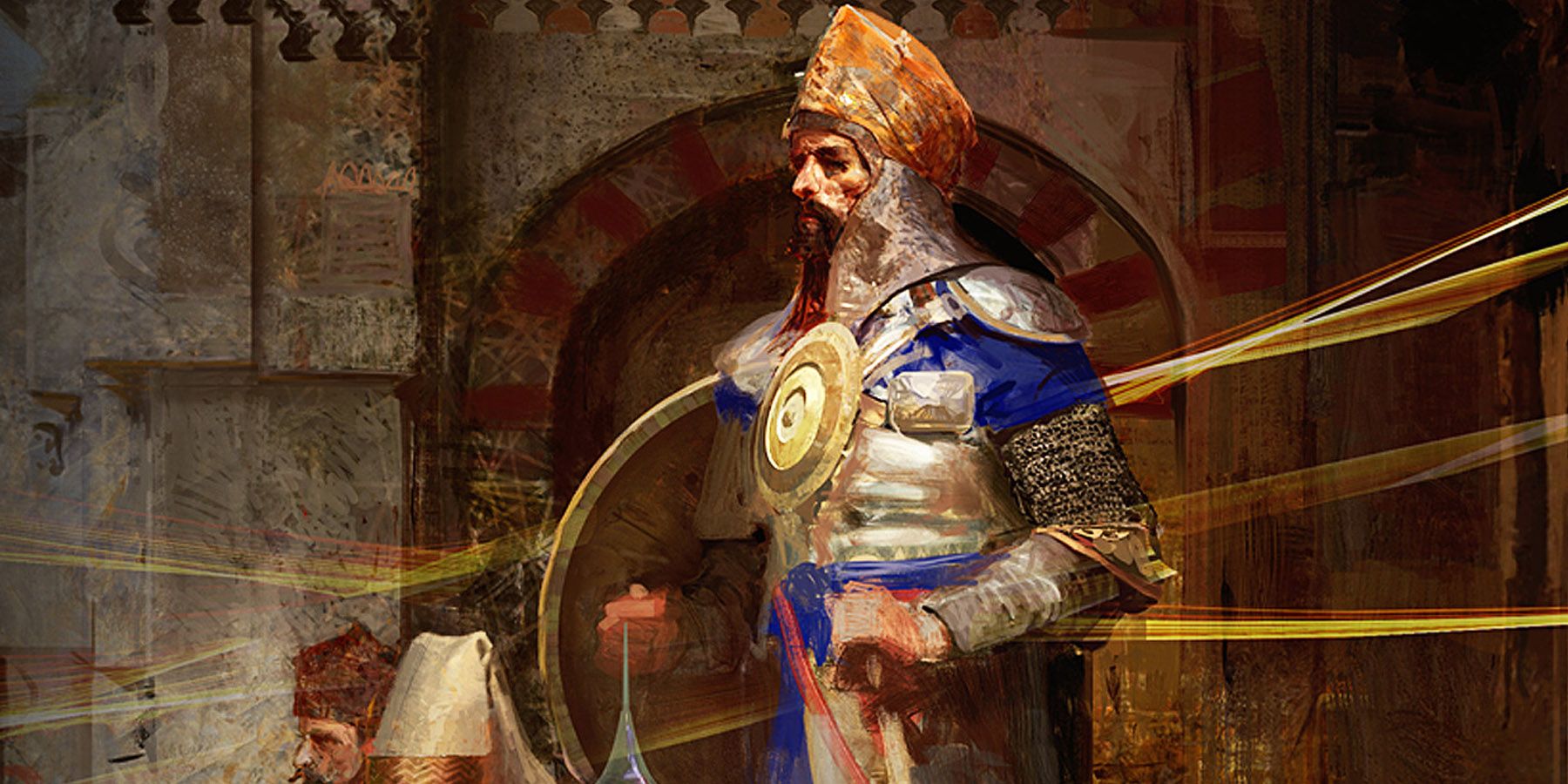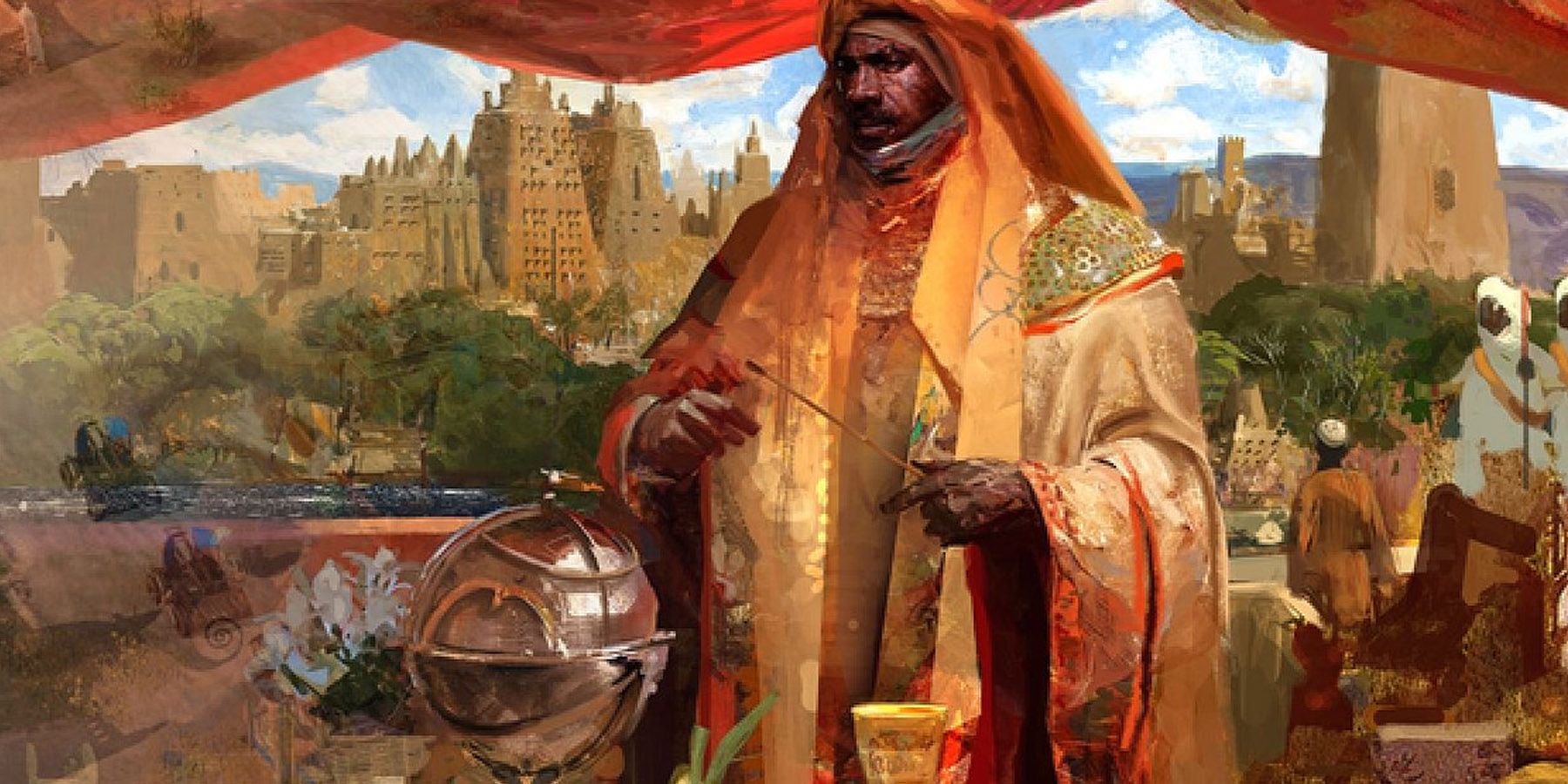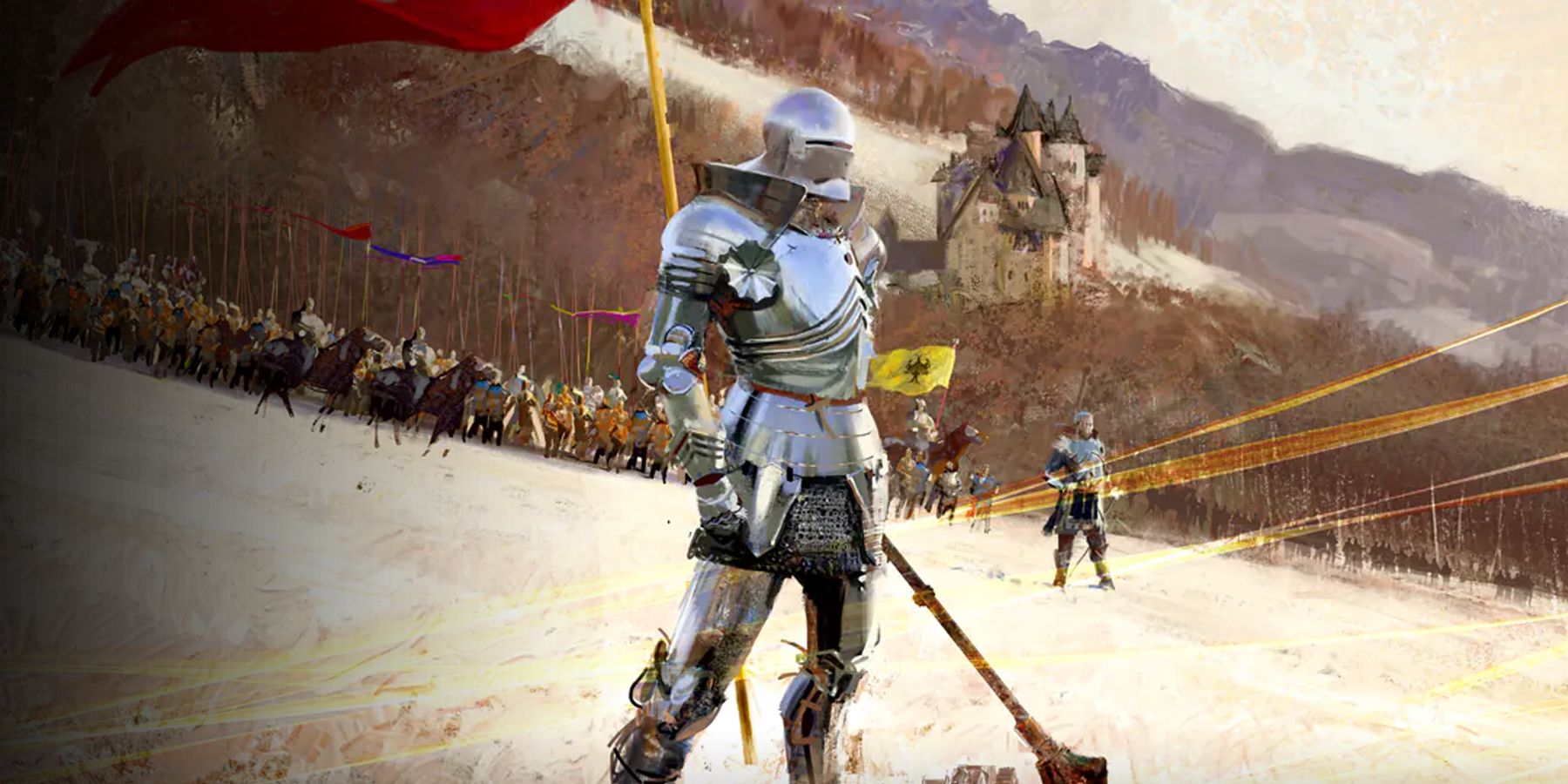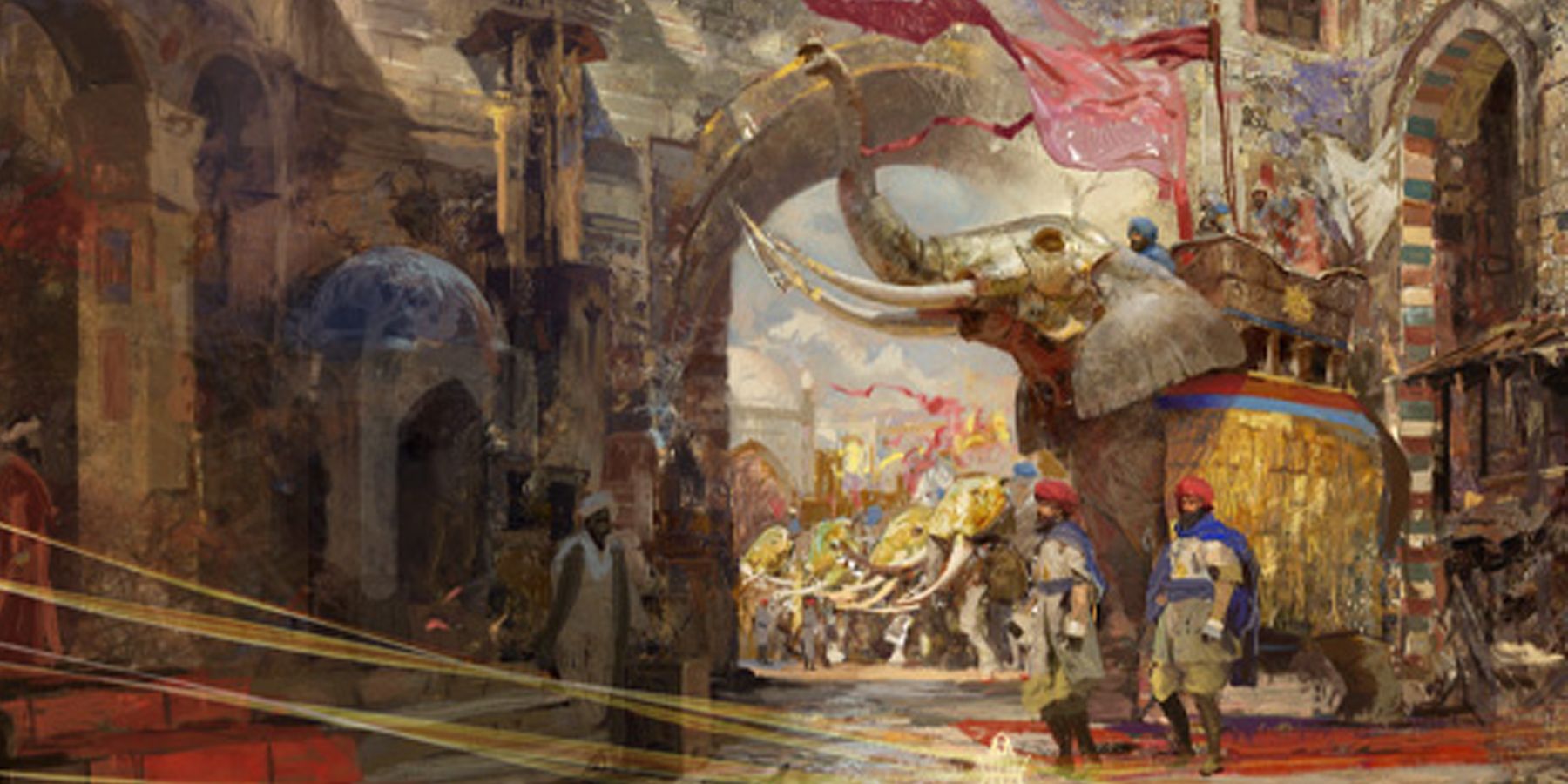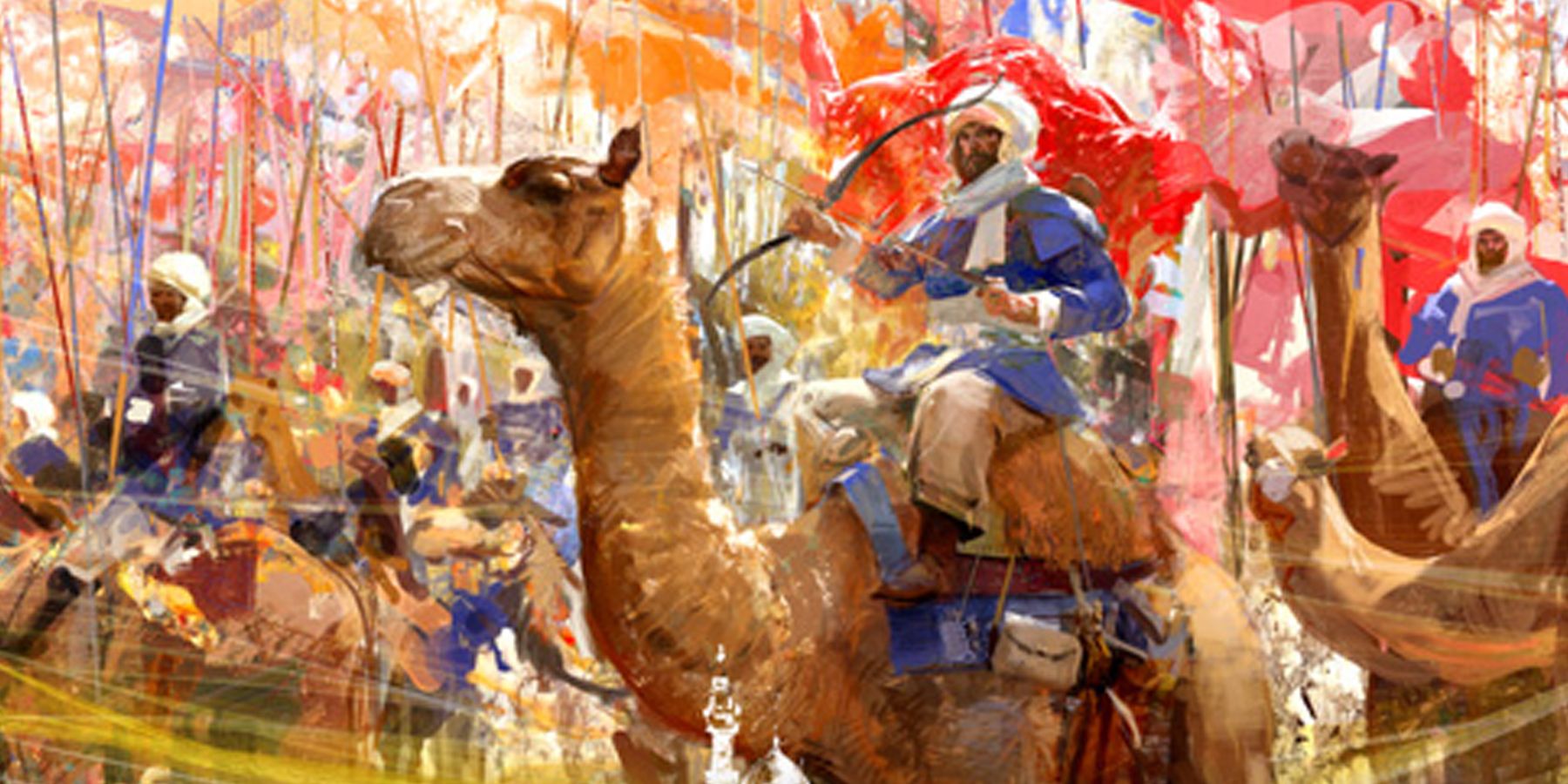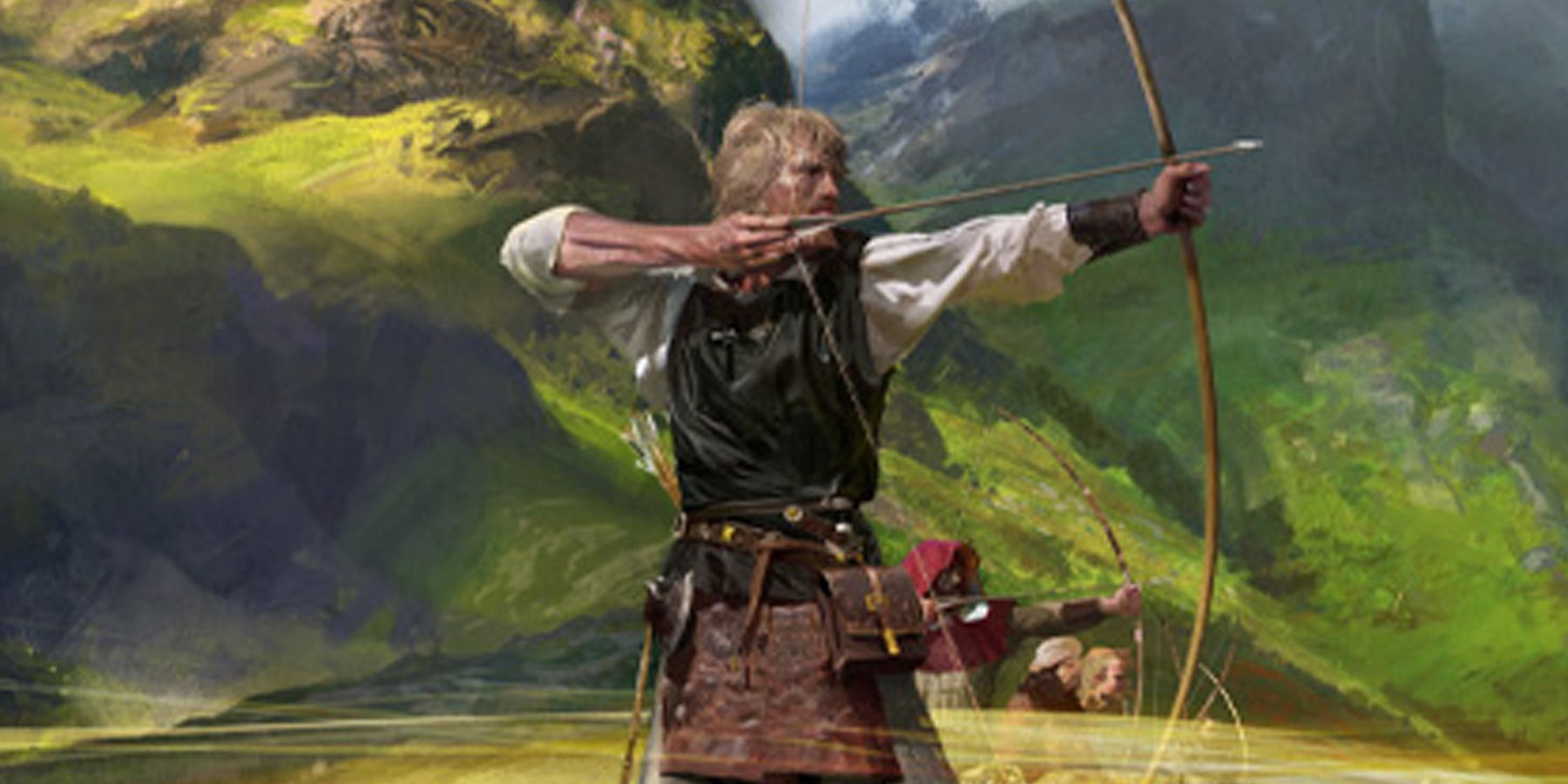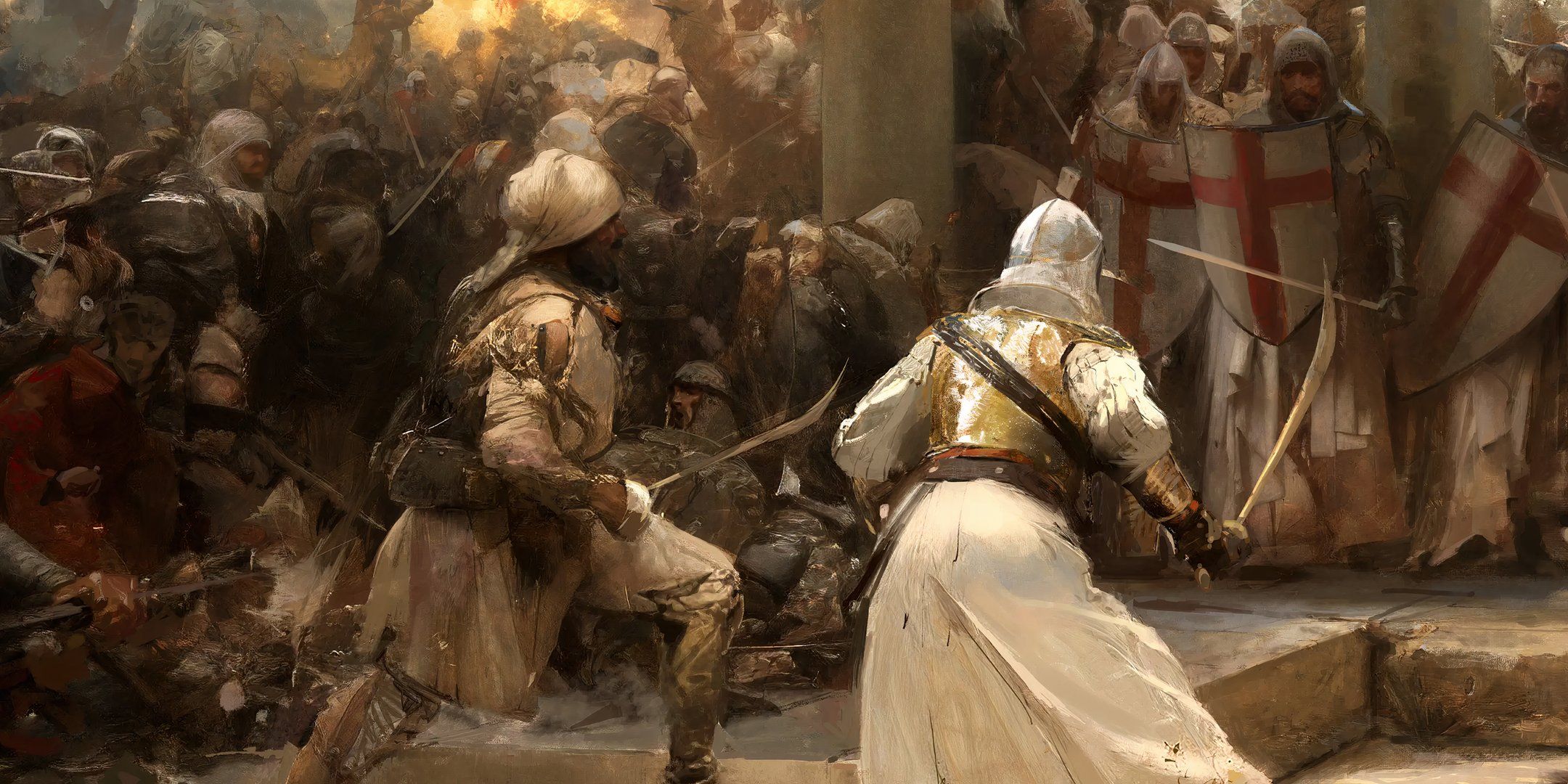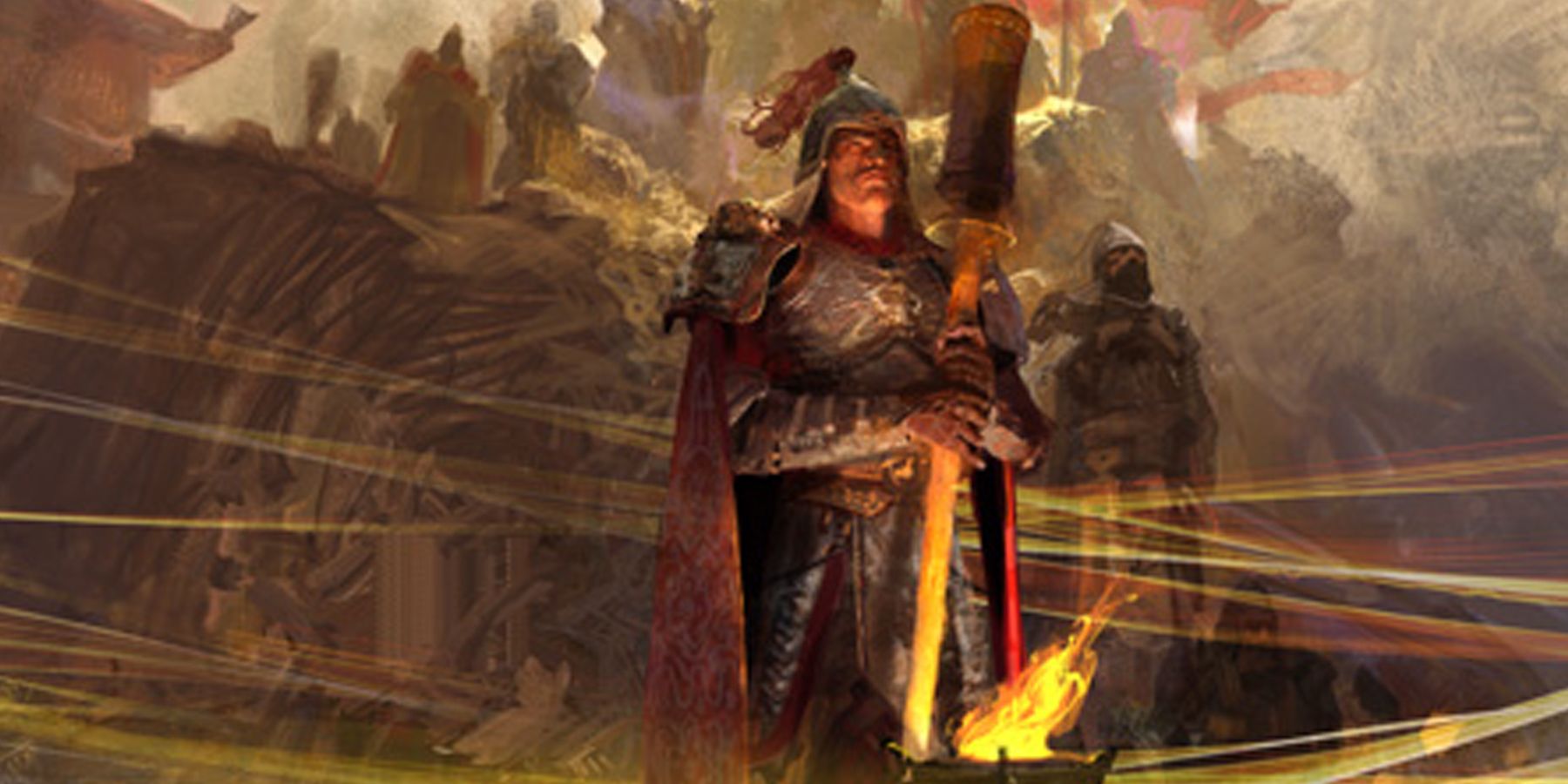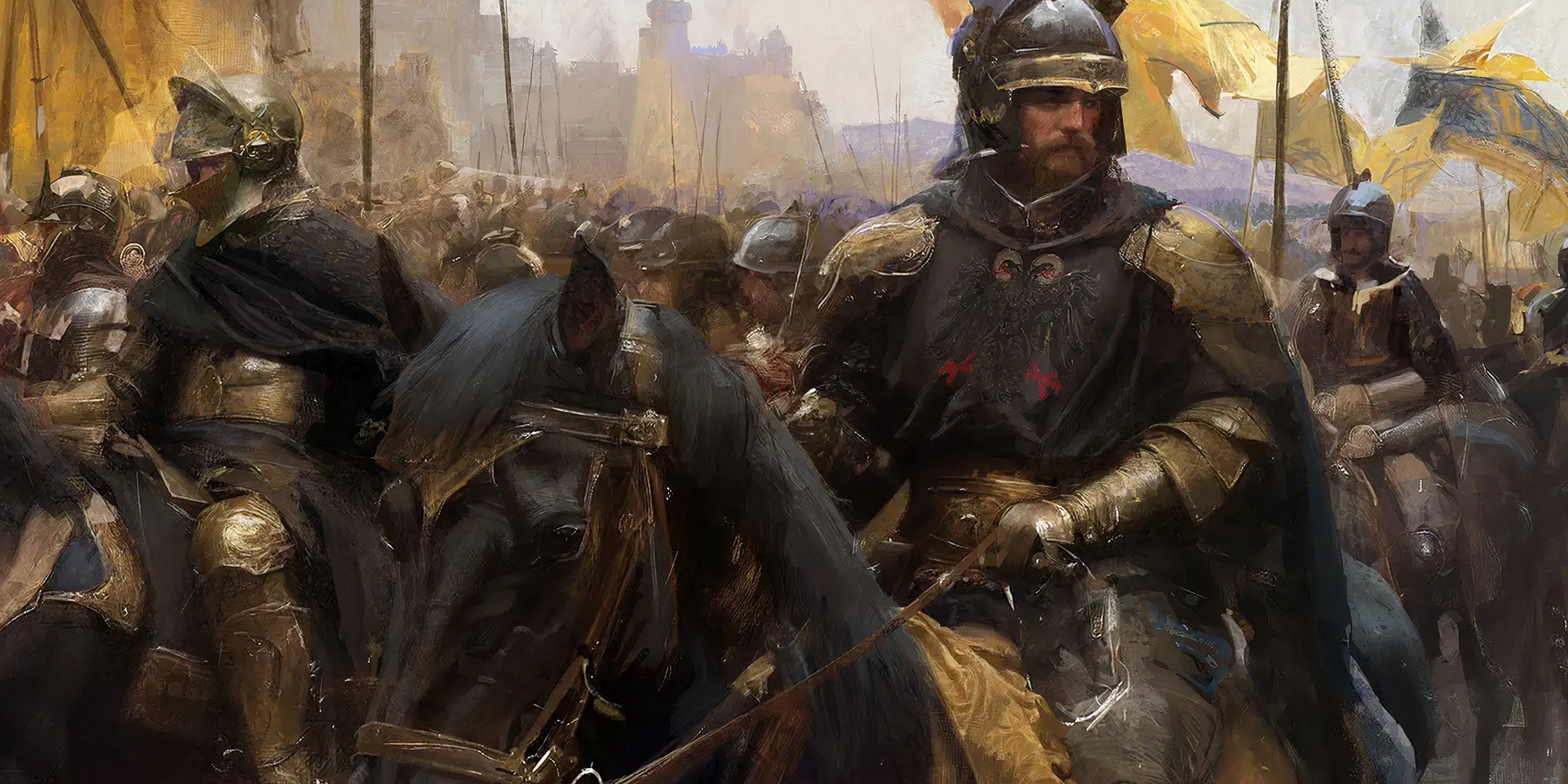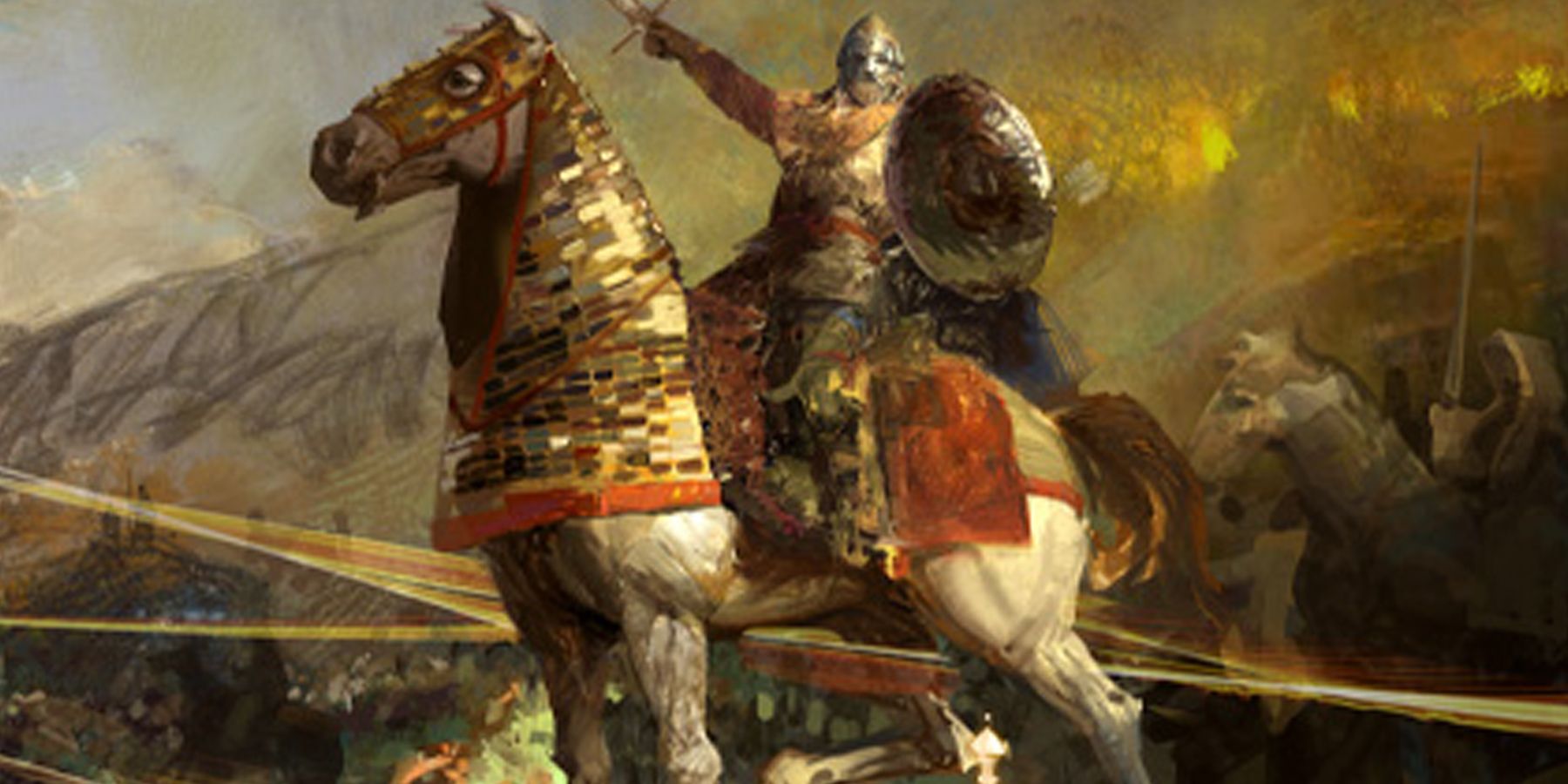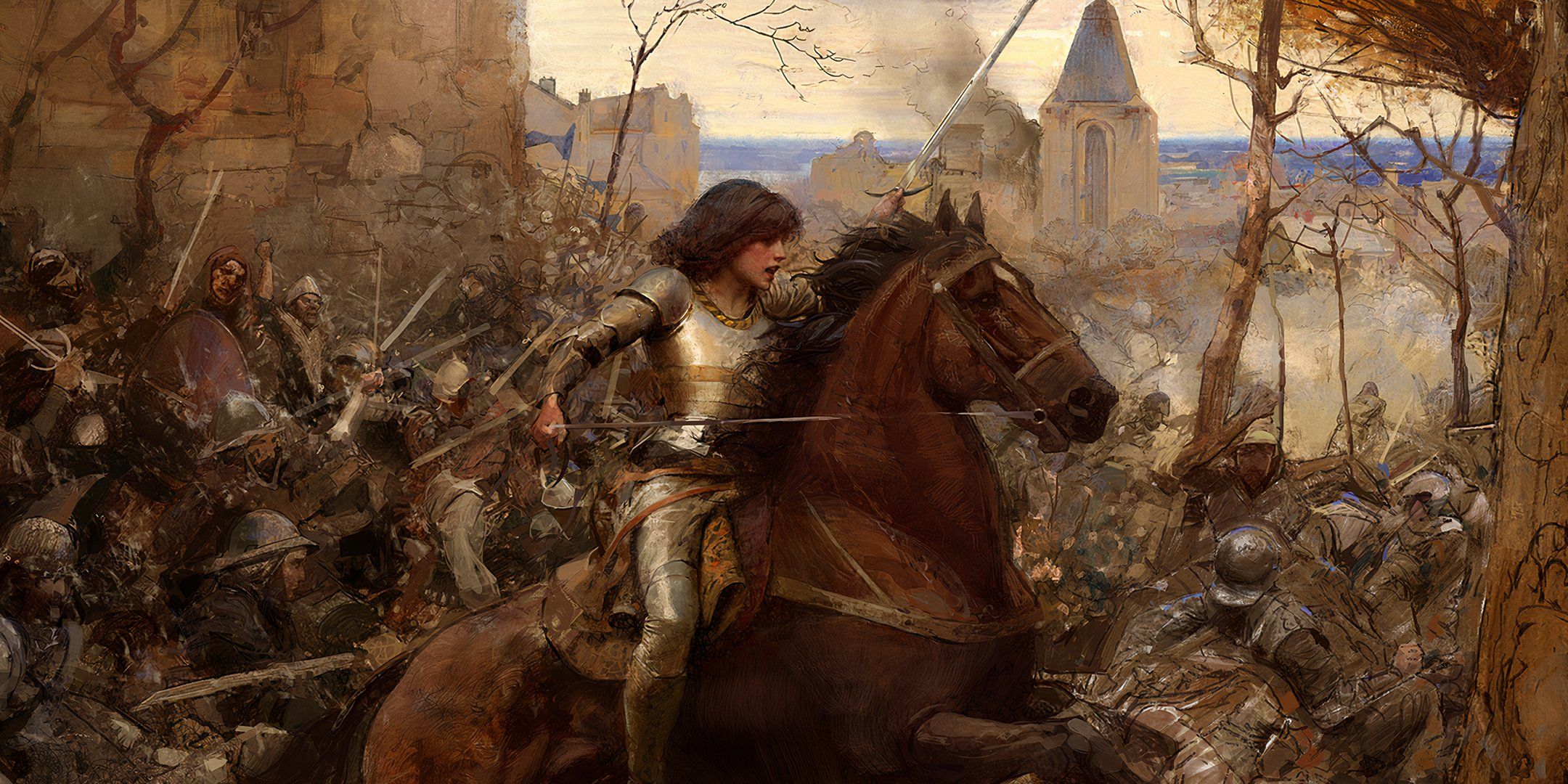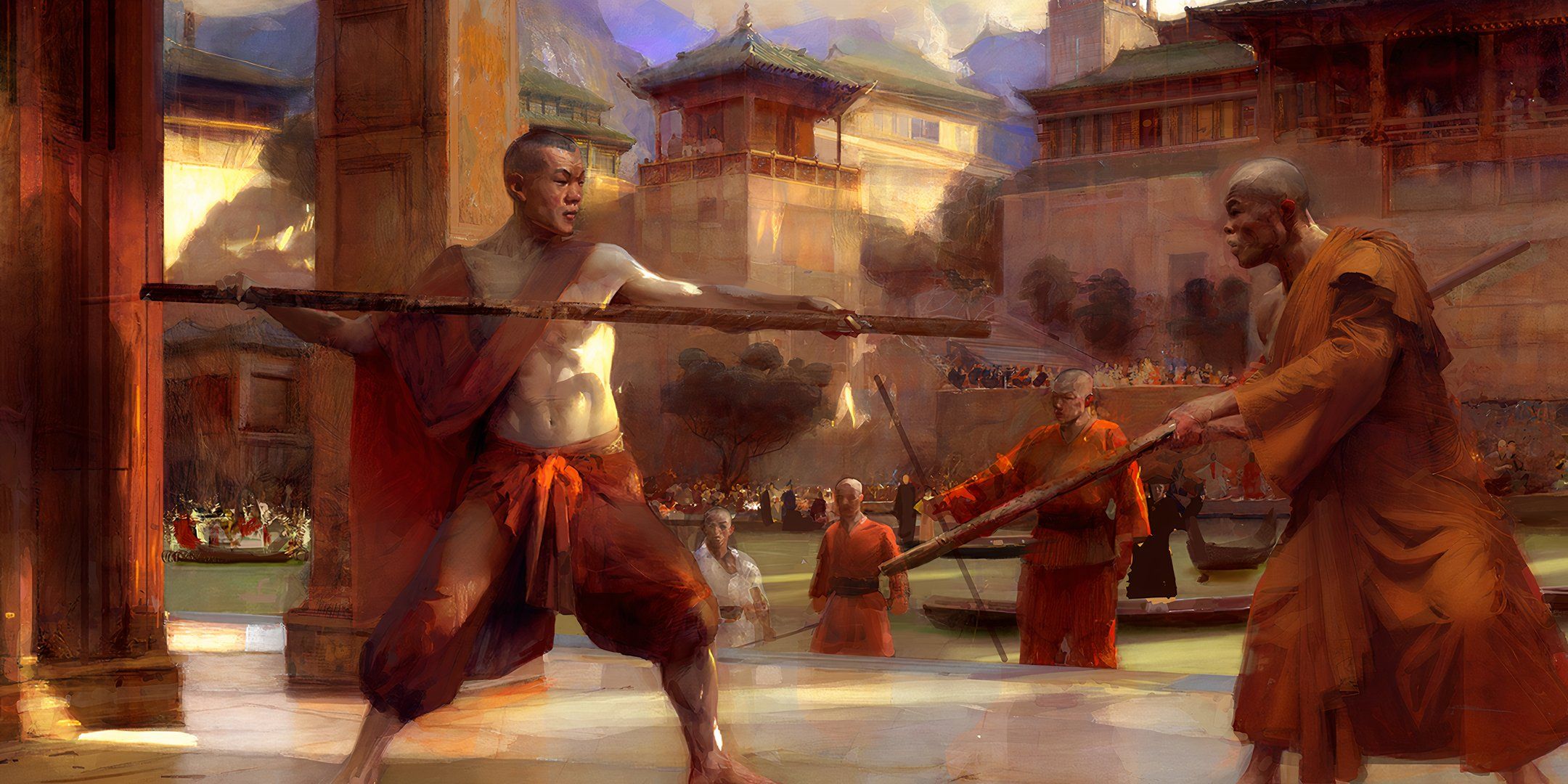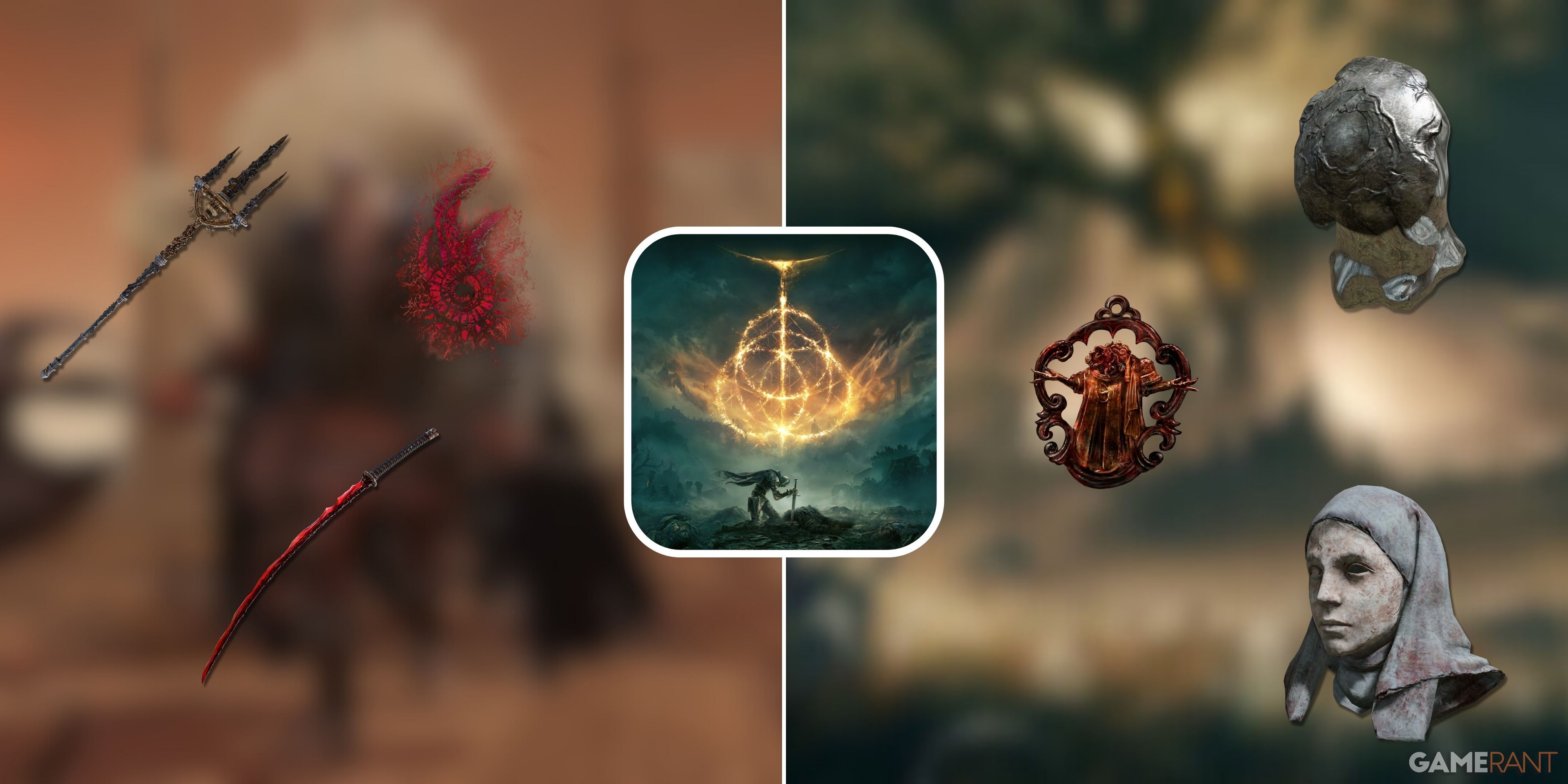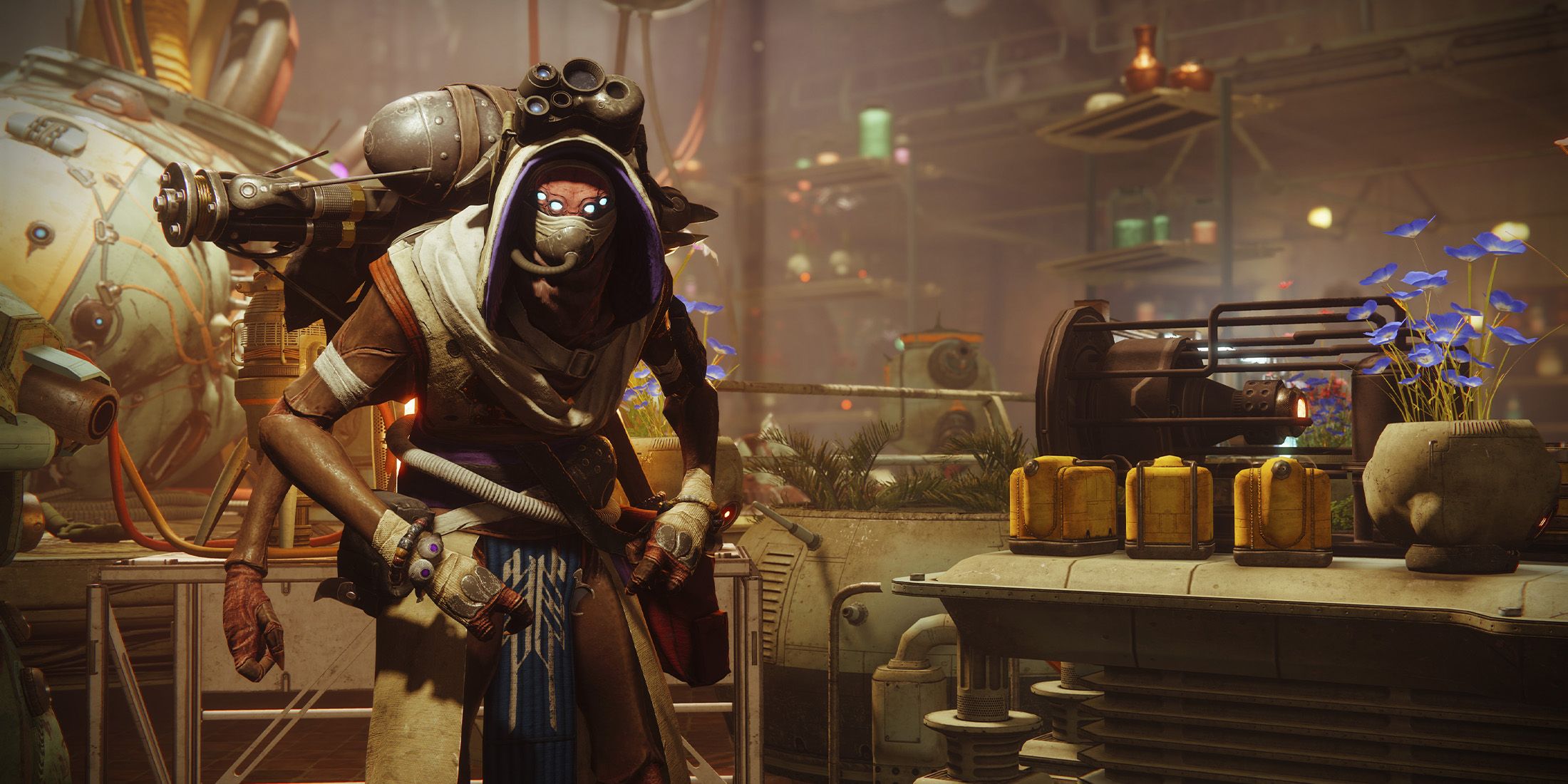Key Takeaways
- Age of Empires 4 focuses on eight empires and kingdoms during the Middle Ages, offering unique strengths and weaknesses for each civilization.
- Players must understand their chosen civilization’s strengths, weaknesses, and ideal strategies to optimize gameplay performance.
- Upcoming World’s Edge-sponsored tournaments provide opportunities for players to showcase their skills and strategies in Age of Empires 4 esports.
With more than fifteen years between Age of Empires 4 and its predecessor, it’s about time that the Age of Empires franchise once again took some of the world’s most notable empires and relived the heights of their respective golden ages. Unlike other Age of Empires games, Age of Empires 4‘s original release took eight empires and kingdoms at their peak during the Middle Ages, with this period serving as the game’s main setting.
As with other Age of Empires games, each faction in Age of Empires 4 has its set strengths and weaknesses, as well as special traits that set them apart from the rest. However, just how should players look at each Age of Empires 4 civilization in the context of their gameplay performance?
Updated September 24, 2024, by Rhenn Taguiam: With this month marking the release of an official Public Esports Tournament Calendar, both casual fans and hopeful pros in the Age of Empires 4 scene can now see all upcoming World’s Edge-sponsored tournaments for Age of Empires titles – not just for AoE 4 but even earlier editions, as well as Age of Mythology: Retold. However, fans who want to upgrade their Age of Empires 4 gameplay should consider not just the overall strengths of each available Civilization, but also their weaknesses. Understanding how opponents can take advantage of their Civ’s potential openings and setbacks can help players plan their approach in advance – not only avoiding quick losses but even surprising enemies by knowing exactly how they can turn potential counter-offensives into their advantage.
16 Japanese
Multi-Purpose Buildings & Infantry Units Pave The Way For Highly Adaptable Plays
The Japanese of Age of Empires 4 are taken from Japan’s turbulent Warring States period, where areas were controlled by warlords called Daimyo who once constantly fought for territory until united under the heel of Nobunaga Oda. The Japanese gameplay in the Age of Empires installment follows the principles of its original era, where a Daimyo’s territory always has to be prepared for constant sieges and assaults.
In turn, the Japanese kit is built to be self-sustaining. Despite its army being rather average on a technical level, the right support system can transform the Japanese into heavy hitters. The Daimyo System provides an upgradeable Town Center where advancements upgrade both defenses and nearby production. Units are also tailored to especially defend, make careful advances, or even sabotage enemy production when used correctly.
Ideal Strategy For Success
A major part of the Japanese’s strategy in Age of Empires 4 is the transition towards becoming a sustainable and defensible civ, especially with unique tech that boosts Villager carrying and gathering caps (Towara, Takezaiku, Fudasashi), as well as Town Center upgrades that add buffs on top of an extra Villager, HP, and +25% Harvest Rate from nearby Farms (Daimyo Manor, Daimyo Palace, Shogunate Castle).
This strategy of building powerful setups at the comfort of distance extends to units as well, with specific Samurai Bannermen units catering specifically to buffing the attack of particular unit types. The Yumi Ashigaru are weaker but cheaper Archers that can be protected by Samurai who possess Deflective Armor as well as the combat-specific Onna-Musha (Crossbowman) and spearing Onna-Bugeisha. The Feudal-unlocked Bannermen have Castle-level stats, making them capable of early-game poking or late-game devastation when combined with the units they’re built to buff.
Weaknesses to Take Note
The lack of any economic bonuses for sheep and no keep in Castle Age can make the Japanese vulnerable in both the early game and the late game. Moreover, expensive Farm upgrades will force the Civ to have a stricter macro game or else risk losing out to better-planned strategies.
15 Byzantines
Capitalize On Tactical Aggression With Outsider Mercs
Based on the Byzantine Empire from around the 1000s to the 1600s, the Byzantines that players encounter in their Age of Empires 4 gameplay boasts a similar flair for intercultural exchange and military domination. Much like how the Byzantines had become the medieval world’s cultural beacon from the mighty Constantinople, so do the Byzantines of AOE 4 boast a literal international strength – all courtesy of intercultural units paving the way for flexible combat strategies.
The civ’s Aqueduct network taps into the inner city sim lover in players, boosting productivity and Olive Oil generation depending on proper building placement. The latter is especially important as a unique fifth resource, representing the real-life historical commodity to pave the way for hiring units from other factions such as Mercenaries. When fielded in combat, Byzantine units may also use Greek Fire, which can permanently affect terrain.
Ideal Strategy For Success
Key aspects to dominating as the Byzantines rely on the synergy between Olive Oil production and the overall economy bonuses through the civ’s Aqueducts and Cisterns system. With the right setups, players can have up to twice the building and research time to fast-track their way into Feudal and Castle. Unlike other civs, even having equal eco with enemies may secure the player the advantage through Olive Oil, which allows players to hire Mercenaries from other civs to theoretically counter other setups.
The Byzantines’ units aren’t pushovers. Despite being a costlier Knight, the Cataphract can facilitate stronger assaults when enough are fielded onto the battlefield. Berserking with the Varangian Guard replaces defense with impressive offense. Lastly, Greek Fire via the Cheirosiphon can transform battlefields into death traps when used to delay the enemy’s advance.
Weaknesses to Take Note
The slow setup of the Byzantines demands strong macro or players will risk being outpaced throughout the rest of the game. Their slow-trained Mercenaries and relatively weaker Feudal-level units can make the Byzantines relatively weak should enemies find this gap in their production.
14 Ottomans
Diversify Combat With Military School & Imperial Council Offerings
Originating in Eurasia, the Ottomans arrived in Age of Empires 4 in its “Anniversary Edition,” bringing with them expertise in light cavalry, earlier access to gunpowder units, and a more flexible approach to their military. Reflecting their real-world reputation for stability in their rule while boasting a well-maintained military, Ottomans in AOE 4 gain the upper hand rather quickly as soon as players optimize their production bonuses.
Key to the Ottomans’ success in an Age of Empires 4 match is their access to their Viziers and the Military School, diversifying their army through a wide variety of special units and soldiers. For instance, the Ottomans have units that deal more damage at long range (Sipahi), buffers to other soldiers in range (Mehter), a calvary buffer and siege engine repair specialist (Janissary), and even a mobile Military School (Grand Galley).
Ideal Strategy For Success
Players can find success in their Ottomans playthrough depending on how they use the Imperial Council and Military School, especially since these unlock various technologies that diversify the faction’s offerings depending on what players need. For instance, the Imperial Council system provides various bonuses that allow them to catch up with other factions much faster.
While the Ottomans lack special economy bonuses, their Military School can produce units for free at a much slower pace. Due to the Military School, the Ottomans could access Spearmen as early as the Dark Age. Attacking enemies periodically ensures they lose out on resources while players take advantage of cheaper build costs. In terms of growth, Ottomans could combine Traders inside the Sultanhani Trade Network and the Imperial Age Sea Gate Castle to secure bonus Gold.
Weaknesses to Take Note
The Ottomans heavily relying on the Military School also means they don’t have a strong economy beyond it – demanding heavy macro on the part of its player. When enemies realize that the Ottomans also don’t have armored units in the Feudal Age, a properly timed rush can stop the Ottomans’ eventual domination.
13 Malians
Balanced Kit Focus On Economy & Mobile Units
Hailing from Africa, the Malians become a viable faction with their focus on cattle, economy, and infantry, providing for a rather balanced playstyle that allows them to adjust to any situation. The civilization’s toolkit primarily gives players economic advantages, trading in military strength with a penchant for fast and loose combat that takes advantage of their mobile units.
A crucial part of the Malians’ success in AOE 4 is their access to Pit Mines and Gold Deposits that ensure they’re able to generate money quickly. Investing these into their Cattle and other resources gives Malians a lot of room to speed up their production process, allowing them to bypass tedious waiting times in favor of accessing units earlier for their favored hit-and-run tactics, albeit in exchange for units with lower hit points and lower damage.
Ideal Strategy For Success
Unlike other factions in Age of Empires 4, the Malians make for a decent mid-level civilization courtesy of their passive income and unique approach to the military, posing a challenge for players who want to try different setups. The lasting Gold provision of the Pit Mines ensures the Malians are able to create units, whereas the Cattle can guarantee passive access to Food. In terms of military, some of their units boast stealth (Musofadi Warrior, Gunner), an improved Scout (Warrior Scout), light infantry (Donso), and even a cheaper cavalry (Sofa).
Due to the Malians excelling in mobility, their ideal strategy involves outpacing opponents early on in the game. Even with two Scouts, Malians can harass enemies in the early game by removing their access to valuable resources while players develop the civilization. This can continue through the next stage of the game, where players periodically attack opponents to prevent them from achieving proper growth while their own steadily approaches optimal production.
Weaknesses to Take Note
It’s precisely because of their early-game strength that the Malians need a strong macro game to eventually outpace foes. Their lack of horsemen and crossbows can become a disadvantage that enemies can tap if they manage to zero in on this gap in the Malians’ formations.
12 Holy Roman Empire
Religious Focus Unlocks Powerhouse Features
As the name implies, the Holy Roman Empire has a stark focus on religion that serves as their win-con. Knowing exactly how to tackle this focus on religion can certainly guarantee a victory when done correctly. Players who use the Holy Roman Empire need to consolidate their religious power ASAP, which is done easily via gathering relics. With the right positioning, the Holy Roman Empire can benefit from outstanding bonuses in attack, range, and defense, as well as boosting the attacks of various units, especially when positioned near naval units.
That being said, the Holy Roman Empire does have more focus on relics and defense, leaving them quite predictable in the hands of a newcomer. However, knowing how to take advantage of their mechanics can give players a characteristic edge in the long run.
Ideal Strategy For Success
Being a more specialized faction, players can excel with the Holy Roman Empire if they focus carefully on their religious potential. This is made easier considering they enjoy a 25% boost in building time for fortresses, towers, and outposts.
When combined with the boosts relics provide in towers, fortresses, outputs, and docks, a well-developed Holy Roman Empire can enjoy plenty of advantages in the early game. Not to mention, the Prelate religious unit is already accessible in the first era, with Early Warriors accessible as early as the second.
Weaknesses to Take Note
The Relic-heavy game of the Holy Roman Empire can become their biggest weakness, as not possessing Relic bonuses can leave them rather poorly paced in most other aspects of the game. Their lack of strong units in the Feudal Age means players need to get to the Imperial Age to have a more competitive advantage.
11 Delhi Sultanate
No Research Costs At The Cost Of Learning Slower
Time is of the essence for the Delhi Sultanate. They’re the only faction to not have research costs in the game, but that comes at the cost of learning everything else much slower. This puts a high demand on the player, as they need to know which research they benefit from in advance lest they spell out their doom early.
To compensate for the longer research times, the Delhi Sultanate also allowed their infantry to create defensive structures, allowing them to fortify defenses whenever necessary. However, the Delhi Sultanate is quite squishy in the early game. Unless players time their research right, they won’t get to capitalize on the Sultanate’s potential in the late game.
Ideal Strategy For Success
Of all the factions in Age of Empires 4, the Delhi Sultanate has a particular focus on tech and knowledge. This makes them rather weak in terms of offense but strong on defense and especially amazing in research, with tech-boosting Scientists already accessible in the first era.
This knowledge-focused approach is reflected in Infantrymen, who cannot build defenses but are compensated by the fact that fishing ships can be armed with archers. Though the lack of offense and difficulty in defense makes Delhi a tricky faction to play, understanding the “groove” in their tech can make them formidable.
Weaknesses to Take Note
While Delhi positions itself as a faction with a lot of tech bonuses, the wrong choices can make them relatively easy to outpace. Not only that, but their research leaves a lot to be desired in expected achievements during Age jumps – such as their lack of decent armored units in the Feudal Age and the lack of strong siege units in the Imperial Age.
10 Abbasid Dynasty
House Of Wisdom Can Diversify Playstyle With Buffs
Sometimes, the key to winning is to outsmart the enemy, and that’s the specialization of the Abbasid Dynasty. Unlike other civilizations, they have the House of Wisdom instead of Landmarks as an age-up mechanic, where players can add wings to the House of Wisdom after every epoch to procure various bonuses.
However, the Abbasids truly shine not only with their unique anti-cavalry units but also in managing what bonuses the House of Wisdom provides the Abbasids. This level of unpredictability can take some getting used to, but players who manage to get the hang of this can force enemies into some unsavory situations.
Ideal Strategy For Success
The building-heavy nature of the Abbasid Dynasty can seem overwhelming at first, which is why their 50% cost reduction for building docks and the speed boost for production, research, and resource gathering during the Golden Age is quite a godsend for players.
Abbasid Infantrymen can also create siege weapons and battering rams without the need for siege engineering. Moreover, rebuilding the various parts of the House of Wisdom can let players go through the ages much faster, giving them access to tech advancements much earlier.
Weaknesses to Take Note
Players aiming to work with the Abbasid Dynasty need to consider the faction’s relative weakness in the Feudal Age. The Abbasid needs a strong macro game in order to maximize their bonuses, leaving a lot to be desired in terms of adaptability.
9 English
Defensive Powerhouse Can Defend Against The Fiercest Threats
Basic isn’t always bad, and the English proves that having perhaps the most streamlined mechanics can work in a faction’s favor. The English have reduced wood costs, making building more economical overall. Their Farms also get a food gathering boost when built near Mills, and the English immediately encourage close ties among buildings.
This tactic works great with their overall toolkit, as the English compensate for the lack of overall features with their awesome defense. Their Network of Castles gives certain buildings an attack speed boost provided they’re close to one another. This works great considering the range boost of their Longbowmen, as well as the higher defenses of fortified walls. Players who want to play safe and sound can rest comfortably behind the walls of their English castles.
Ideal Strategy For Success
Built as an early-level faction, newcomers will enjoy playing the English due to their unique advantages, such as ordinary villagers being able to use bows, as well as a 15% boost in harvesting resources and building farms twice as fast.
Vanguard Warriors are deployable as early as the first era, which, when combined with the English castle network providing bonuses to connected structures, makes English a formidable foe to face.
Weaknesses to Take Note
Despite their early-game advantages, the English still lacks a stable economic bonus to keep the empire sustainable for longer periods. Their lack of decent Cavalry can leave them vulnerable to sudden rushes unless they macro their way properly into Feudal.
8 Ayyubids
Decent Flow And Rhythm For Progression But Weak Endgame
Inspired by the same dynasty created by Saladin, the Ayyubids are a variant civilization of the Abbasid Dynasty that emphasizes adapting to situations with their focus on knowledge, decent cavalry, and powerful siege weapons. Their Civilization enjoys aging up without the need for Villagers, courtesy of wings in the House of Wisdom. Likewise, Mills placed close to Berry Bushes now create Orchards that massively boost the Food cap.
Mechanically, their gameplay is characterized by the presence of melee-and-ranged Desert Raider Cavalry, a defensible siege weapon called the Tower of the Sultan, an AOE-healing Dervish Cavalry, and the House of Wisdom that can provide different upgrades per age up.
Ideal Strategy For Success
As the House of Wisdom is the only Landmark available to the Ayyubids, this is a central point in a player’s strategy in any match. A recommended gameplay style here would be focusing on the Economic Wing at Feudal Age and creating an Archery Range and a Stable. This should give the Ayyubids access to early Desert Raiders to destabilize the enemy’s economy. With this lead time, players can switch to the Culture Wing to speed up their progress to Castle Age and build Camel Lancers and Ghulams to obliterate foes.
Weaknesses to Take Note
Despite wings making the Ayyubids rather multi-faceted, a lot of their benefits last only for the short term – with not a lot of upgrades offering lasting long-term advantages. This means choosing the right wing at any moment can give them bonuses to areas they won’t be able to capitalize on, leaving them underdeveloped compared to their peers.
7 Chinese
Slow-Burner Can Secure The Endgame With Gold Acquisition
Gold can win wars, and the Chinese know how to use their gold. In Age of Empires 4, their faction relies heavily on gold, which they use to access a plethora of unique technologies and research. However, they have a steep learning curve with the Dynasty System, as this is another requirement in addition to Landmarks to advance in the next stage. Moreover, completing Dynasties will lock out the research of previous Dynasties, adding both a caveat and flexibility to the faction.
The faction’s sheer domination when it comes to passive gold collection compensates for this. This gives the Chinese quite an edge as a slow-burner since their potential is tied to the endgame. However, players need to watch out for aggressive factions, as they can outpace and defeat the Chinese quickly.
Ideal Strategy For Success
Strong in terms of both offense and defense, the Chinese remain one of the most balanced factions with a rather steep learning curve. Villagers can build structures almost twice as fast and defensive structures half as fast. Docks are much faster when it comes to production, incentivizing travel to expand their horizons.
What perhaps makes the Chinese a tricky faction is how their dynasty advancement can lock out certain tech, so players are forced to choose their progression route carefully.
Weaknesses to Take Note
The overall lack of versatility remains the Chinese’s biggest weakness in the title, especially in the early game where they also tend to be much slower in terms of progression. Their lack of armored units in the Feudal Age can leave them vulnerable unless the players macro their way to advancement.
6 Order Of The Dragon
Powerful Economy Paves The Way To More Aggressive Feudal Expansion
Named after the knightly order established by Emperor Sigismund of Luxembourg, the Order of the Dragon is a variant of the Holy Roman Empire that emphasizes building a more tightly-knit military force to crush opponents. Key to this is the existence of Gilded Units, or essentially “premium” variants of traditional HRE units that have better stats but also cost more regarding resources, training time, and population.
Their arrival also came alongside new units such as the cheaper but non-inspiring Prelate and the fast-moving AOE Landsknecht, as well as bonuses that make Emplacements cheaper, Relics being placeable on defenses to boost their stats, and Villagers carrying more resources. When played correctly, the Order of the Dragon can boast an economy powerful enough to pump much stronger units at Feudal Age for early victories.
Ideal Strategy For Success
Gilded units easily become a must-have for Order of the Dragon players, as having the right amount can have them demolish their regular counterparts in duels. Gilded Archers, in particular, are not only better-armored, but their nature as ranged attackers allows them to take down other Archers much faster than they can get damaged. Players need to pay extra care when building Gilded Knights and Gilded Men-at-Arms, as their improved combat performance can still leave them particularly overwhelmed when facing more units than normal. In turn, Order of the Dragon players are advised to be more careful about engagements where they want to deploy their more powerful but fewer units. If not abusing the speed at Feudal Age, they can go for the defensive and wait until Castle Age to capitalize on upgrades.
Weaknesses to Take Note
Despite the Order offering a lot of decent units, many of them are only accessible around the Imperial Age. Their relative lack of pacing opens them to a lot of vulnerabilities unless players can juggle their macro game properly, especially considering the expensive nature of their units.
5 French
Control Resource Production To Maximize Combat Potential
Resources are just as important as troops in combat, and none understand this better than the French. In addition to soldiers that have decent bonuses, the French boast a unique influence feature that boosts the unit production of Archery Ranges and Stables, provided they’re close enough to a Keep. Additionally, their Town Center produces soldiers much faster, and they boast overall stronger cavalry compared to the other factions.

Related
7 Best Strategy Anime Games, Ranked
Strategy games are a great choice for players that want to think critically, and these are the best anime strategy games to choose from.
The French also have incredible control over resource production, as they’re the only faction that can declare which resources get back into the base. Due to these unique resource mechanics, the French have a ton of flexibility when it comes to customization and unit management.
Ideal Strategy For Success
Known for their knights, horsemen, and merchants, the French shine in both trade and combat. For instance, trade ships bring more gold, whereas Merchants can return any resource to the market. Not only that, but each new era will boost production rates, which is greatly useful considering how they possess cheaper economic tech and resource buildings.
Moreover, the French immediately show their combat prowess as melee tech is available free of charge, arming the French with supremacy in both trade and combat.
Weaknesses to Take Note
The French suffer from a bad economy in the late game, which can be extremely detrimental for them considering their overall subpar Infantry—at least when compared to what other Civs offer by the time they reach their population caps.
4 Rus
Endgame Security And Sustainability
While the Rus definitely lacks strength in the early game, they compensate well by the time they reach the endgame. Their Bounty mechanics emphasize the more aggressive build of the Rus, as hunting more animals via the Bounty not only gives more bonuses but also gives relevant boosts to the income of Hunting Cabins and food gathering.
In terms of combat, the Rus also have advantages when it comes to firepower. Their Warrior Monk can buff allies near them, while the Streltsy is reasonably buffed compared to other gunpowder units. When paired with the right tech upgrades, such as Biology, which boosts cavalry health, and Chemistry, which boosts gunpowder damage, attacks from the Rus will hurt any other faction in the long haul.
Ideal Strategy For Success
The Rus are rather particular regarding their survival, making them one of the more secure and sustainable factions in the game. In fact, a lot of their highlights involve food, such as boosted profit from food sources, boosted rewards from killing animals, and even exempting fishing ships from the need to dock to deliver goods.
Additionally, the Rus enjoy stronger wooden fortresses with better-equipped outposts, as well as Early Knights accessible as early as the second era.
Weaknesses to Take Note
The Rus getting their better units and tech until the Imperial Age leaves a lot to be desired in earlier stages of the game – which is thankfully compensated for their overall well-balanced kit. However, their lack of stone walls and “unique” units makes them lacking in terms of specialized plays.
3 Jeanne D’Arc
Growth From Peasant To Hero Comes With Useful Abilities
An alternative to the French civilization, the Jeanne D’Arc faction emphasizes the presence of the acclaimed historical figure as a Hero Unit. She becomes the focus of strategies involving the faction, where she begins as a Villager who undergoes the Journey of the Hero. Across Levels, Jeanne can become an Archer or a Warrior, get access to tough infantry Champions or cavalry Riders, and get the ability to call many of them simultaneously or get a powerful cannon.
The rest of her faction’s unique elements emphasize Jeanne as the powerhouse of the Civilization. Players can choose to produce units faster (School of Cavalry) or get more Traders per economic tech (Chamber of Commerce), as well as produce more resources that are stored (Guild Hall) or even bypass Age requirements for Landmarks (Royal Institute), among others.
Ideal Strategy For Success
Compared to the original French Civilization that emphasizes macro-style economy management, Jeanne D’Arc spices things up with a hero-focused micro-style strategy. This gives players more options to deal with opponents outside the traditional Royal Knight strategy commonly associated with the French. Now, players can decide whether to use Jeanne’s Champions against enemy spearmen or Jeanne’s Riders against crossbowmen – both key counters to the aforementioned units often used against Royal Knights. Playing Jeanne demands a more aggressive style of play, as losing out on her levels can drastically slow down the Civilization’s performance.
Weaknesses to Take Note
While Jeanne herself offers a lot to the table with her faction, losing her also means missing out on a lot of the advantages she provides. Aside from the Civ being heavily Jeanne-dependent, their natural disadvantage on eco doesn’t scale well in terms of late-game activities.
2 Zhu Xi’s Legacy
The King Of The Fast Castle
Essentially a variant of the Chinese Civilization, Zhu Xi’s Legacy is inspired by the teachings of the philosopher-politician Zhu Xi, whose prominence during the Song Dynasty is reflected in the faction with unique units such as the Palace and Imperial Guards, the Yuan Raider, and the Shaolin Monk.
However, where Zhu Xi’s Legacy shines is how it gives fans of the Chinese Civilization room for flexibility in the strategy game. Thanks to constant resource generation by Meditation Gardens and cheaper buildings during the Song Dynasty, Zhu Xi’s Legacy no longer have to worry about the Feudal Age and could transition more comfortably to Castle Age. Units being much cheaper in Castle Age’s Yuan Dynasty can give Zhu Xi’s Legacy an edge when outpacing and outmanning foes in conflicts.
Ideal Strategy For Success
Due to Zhu Xi’s Legacy removing much of the Chinese’s initial food woes alongside the presence of aggressive and mobile units, this faction opens the potential for fast castles and other rush builds. A sample build here would be opting to build a Mill as soon as the game begins and a Village, where Food and Gold can get one Villager each and four others assigned to Wood. By the time players can build the Meditation Gardens, they can age up to Feudal and build an Archery Range while the Scout checks opponent areas players can harass. Gold and Food should be a priority until players build a Blacksmith and upgrade based on the opponent’s existing units. At this point, players should have enough to build a standard platoon of Zhuge Nu and Palace Guard units for early finishes.
Weaknesses to Take Note
While the Zhu Xi does remove a lot of the Chinese’s initial weaknesses, they do rely heavily on tempo to stay ahead of their foes. Not only that, missing out on early finishes will leave them rather vulnerable in the late game, especially since they lack important upgraded units that other factions will likely have.
1 Mongols
Mobility Domination Can Lead To Fast And Loose Plays
No enemy should underestimate the Mongols, thanks to their sheer speed and battle prowess. Age of Empires reflects this with the Mongol faction, which can easily overpower enemies with their incredible mobility. Their greatest strength lies in unpredictability, especially since they can move their base at will — perfect for escaping otherwise impossibly difficult situations.
It’s thanks to this impressive mobility tactic that Mongols excel in the hit-and-run strategy, encouraging players to separate their towns for a more organized offense. And when enemies do eliminate one of the player’s forces, there’s always another one waiting to be mobilized. Not to mention, Mongols began with the maximum population available, meaning players could go straight to training troops for combat.
Ideal Strategy For Success
Perhaps the best faction for fast and loose gameplay, the Mongols can also become quite challenging — and fun — to master. There’s no need to build houses, so players can enjoy the ability to move structures at will. This is compounded by the Early Horsemen and the Spearmen in the first and second eras, respectively, emphasizing the nomadic nature of the faction.
Their mobile nature also provides boosts to the movement and health of transport ships and incentivizes razing enemy buildings. While these advantages seem compelling, players do need to have a clear mobile strategy in mind lest enemies outmaneuver them.
Weaknesses to Take Note
The ability of the Mongols to constantly reposition their bases does have the distinct disadvantage of giving them much weaker defenses, alongside their Farms being harder to maintain and their Villagers being harder to mass.



